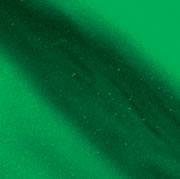 Mysterious glow: fast-moving electrons cause aurora, but scientists do not know what accelerates the particles.© Nature
Mysterious glow: fast-moving electrons cause aurora, but scientists do not know what accelerates the particles.© NatureWhat better way to investigate the delicate beauty of the 'northern lights' than by blasting them with radio waves?
Scientists working in Alaska have used such waves to make speckles of green light twinkle within the aurora borealis. The technique could help them to clear up the enigma of what causes the pulsating natural light shows.
"We were very surprised to see a significant effect," says Todd Pedersen, a member of the Air Force Research Laboratory at Hanscom Air Force Base, Massachusetts. The researchers had thought they would need statistics to pick out any effect from the radio waves. In fact, the sparkles were visible to the naked eye.
“It's cool that they created a visible effect just using radio waves.”
Pat Newell
Johns Hopkins University, Laurel, Maryland
"To actually see features equivalent in brightness to the aurora was amazing," says Pedersen. "Our initial reaction was to check the equipment to see if anything was malfunctioning." The research is published in Nature1.
Freckles of light
Pedersen and Elizabeth Gerken, an atmospheric physicist from Cornell University in Ithaca, New York, targeted the aurora borealis on 10 March 2004. They used a 960-kilowatt radio transmitter at the High Frequency Active Auroral Research Program (HAARP) facility near Gakona, Alaska. The transmitter is twice as powerful as the BBC's biggest radio masts in Britain.
The speckles of light form in the ionosphere, the layer of charged particles that begins about 50 kilometres above the Earth and reflects radio waves around the globe.
The ionosphere is filled with electrons streaming from the Sun. Most of these are deflected around the Earth's magnetic field. But some ride along magnetic-field lines into the upper atmosphere around the poles.
 Radio waves cause speckles in the aurora by jiggling electrons.© Nature
Radio waves cause speckles in the aurora by jiggling electrons.© NatureVariations in electric fields in the polar atmosphere accelerate the electrons, which collide with molecules of oxygen and nitrogen in the air, making them glow and forming the aurora.
Scientists do not know what causes this acceleration, says Pat Newell, who studies aurorae at Johns Hopkins University in Laurel, Maryland. Some argue that a steady electrical field is responsible, as if different atmospheric layers were two terminals of a battery. Other says that waves in the ionosphere's electric field wash the electrons back and forth, boosting their energy every time they change direction.
Bobbing along
Pedersen and Gerken's finding supports the latter idea. HAARP's radio waves make the electrons bob like boats on the sea, showing that these waves could be enough to produce aurora. "It's cool that they created a visible effect just using radio waves," says Newell. "If they could reproduce this it would be a powerful investigative tool."
ADVERTISEMENT
"We can't yet be sure how critical the aurora is to producing the effect," says Pederson, who thinks that it may be possible to generate the speckles of light without an aurora present. Pederson and Gerken are now back in Alaska, blasting the skies.
Johns Hopkins University, Laurel, Maryland
-
References
- Pederson T. R. & Gerken E. A. Nature 433, 498 - 500 (2005). | Article |
